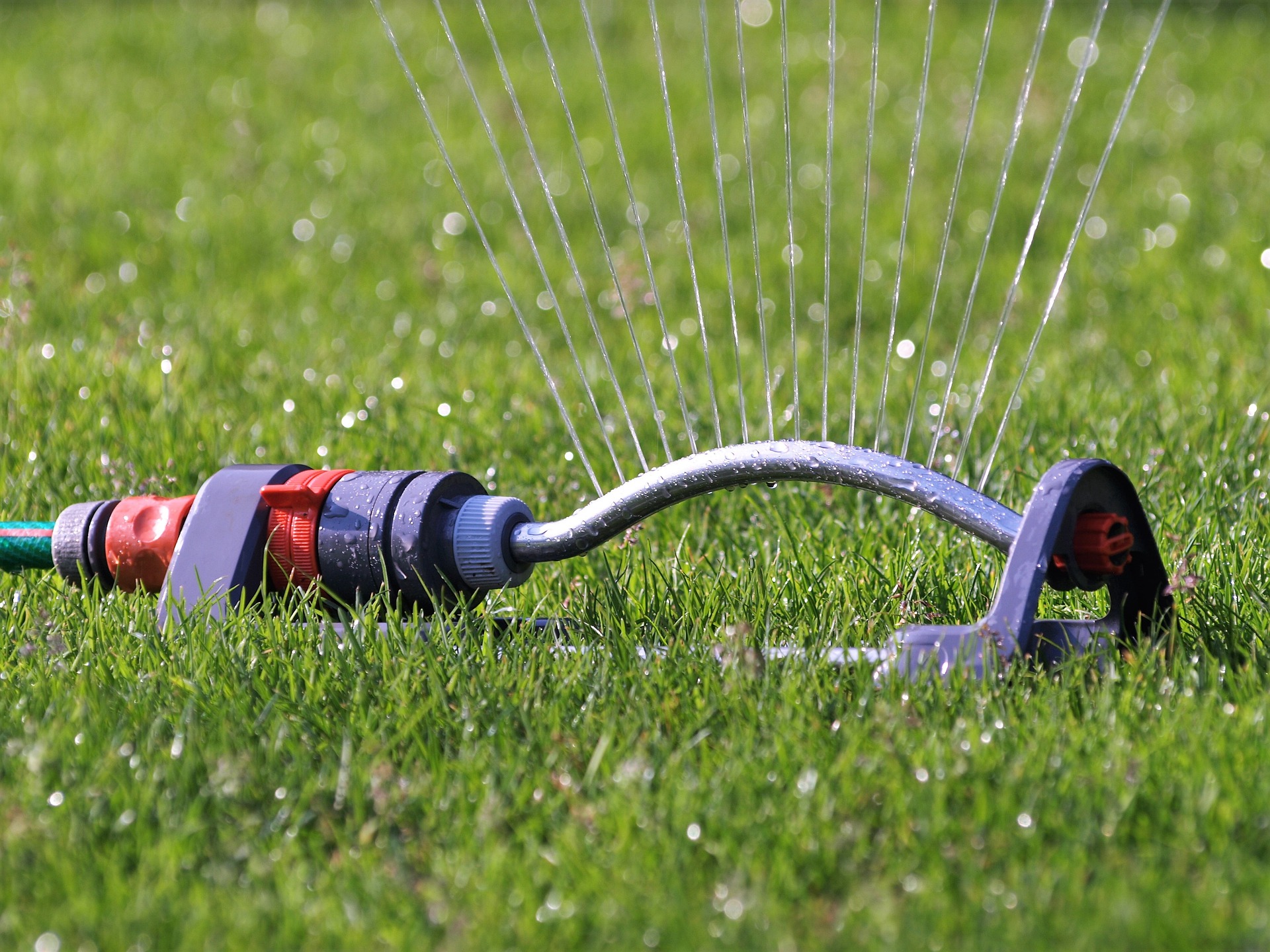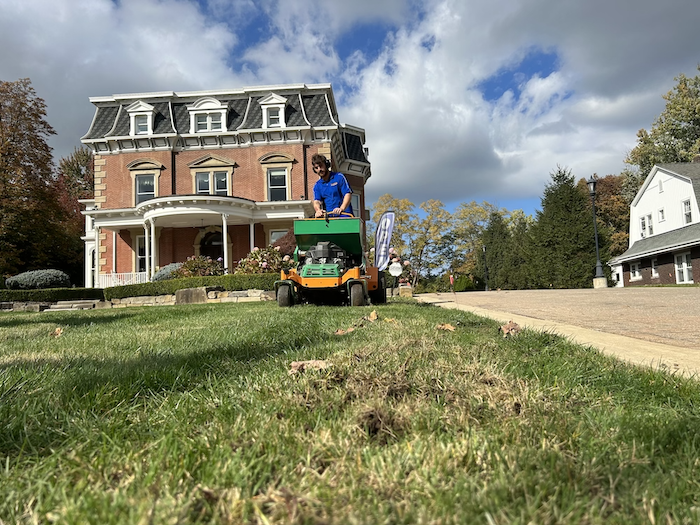/Bare%20spots%20and%20weeds%20on%20lawn.jpg)
Is it Too Late to Save My Northeast Ohio Lawn?
The lush green expanse of a healthy lawn is a source of pride for many Northeast Ohio homeowners.
But maintaining that pristine grass can be challenging, especially when faced with the daunting task of rescuing a neglected lawn.
Fear not! With the right approach and a bit of effort, it's often not too late to revive even the most distressed lawn. Let’s explore the steps you can take to recognize a dead lawn and breathe new life into your lawn and transform it into the envy of the neighborhood.
Is It Too Late To Save My Lawn?
Why is my lawn brown? If you’re seeing grass that looks concerning, it may be time to take a closer look. Before diving into recovery efforts, it's essential to assess the extent of the damage to your lawn.
Start by taking a walk around your yard and observe areas of thinning grass, patches of bare soil, and signs of stress such as discoloration or weeds.
Identifying the underlying issues causing the decline of your lawn will help you develop a targeted plan for restoration.
Can you save a bad lawn? Here are a few issues that may be to blame and how you can turn your grass around.

Do I Have a Dead Lawn?
Since it can be tough to tell the difference between a dormant and dead lawn, you can start by getting closer to the grass and actually giving it a feel.
Try taking a section of brown grass, grabbing some in your hand, and pulling on it. If the grass comes out simply and without much resistance, then you likely have a dead lawn.
The way to fix this is to seed or sod the area and regrow grass or replace the area with a landscape bed. Water the newly seeded or sodded area consistently to keep the soil moist but not waterlogged. Avoid watering too frequently, as this can promote shallow root growth and increase susceptibility to diseases. Monitor the soil moisture levels and adjust watering frequency based on weather conditions and the needs of the grass.
/Technician%20showing%20brown%20spot%20on%20lawn.jpg?width=5168&height=2912&name=Technician%20showing%20brown%20spot%20on%20lawn.jpg)
Dead Lawns Come in Patterns
Another thing you can look for when determining whether you have a dead lawn is to look for brown areas.
You would see the entire lawn turn brown if it was just dormant, while dead lawns show up in circles of brown or tan grass.

Pests such as grubs, chinch bugs, and armyworms can wreak havoc on lawns, while diseases like brown patch and dollar spot can quickly spread and decimate grasses. Keep an eye out for signs of pests or diseases that may be affecting your lawn. Hire a lawn care pro to treat any pest infestations or disease outbreaks promptly by using appropriate control methods to prevent further damage.
/TurfPrideSpring2022(WebOptimized)-69.jpg?width=5168&height=2912&name=TurfPrideSpring2022(WebOptimized)-69.jpg)
Why Is My Lawn Brown? It Could Be The Weather
Weather and temperature swings like we tend to have here in spring in Northeast Ohio can impact your lawn’s appearance.
Our cool-season grasses can go dormant during prolonged periods of high heat. This means the brown or rough-looking grass is not a dead lawn. It is still alive, but will become green again when the temperatures cool again.
Remember, our grasses go dormant after November, typically, and stay dormant during winter until those daytime temperatures return to above 55 degrees Fahrenheit.
/TurfPrideSpring2022(WebOptimized)-276.jpg?width=5168&height=2912&name=TurfPrideSpring2022(WebOptimized)-276.jpg)
Watering Improperly Can Cause Issues
Consistent care and maintenance are key to keeping your lawn healthy and vibrant in the long term. This includes mowing at the appropriate height, removing weeds promptly, and addressing any issues as soon as they arise.
Water is also a crucial component that can cause you to question, “Why is my lawn brown?”
The excessive heat and dry conditions during summer in Northeast Ohio can cause your grass to suffer. By watering properly, your grass will return to its proper color and vigor. But if your lawn has been impacted by other issues like pests or diseases and you have a dead lawn, watering won’t help it.
To water properly, irrigate one to two times weekly for approximately 45 to 60 minutes. You want to provide your lawn with a good soak. Don’t just water for a few minutes or the water won’t reach your lawn’s roots. Your goal should be to provide your lawn with 1 inch of water each week, including rainfall.

Fertilization is Important To Keep Your Lawn Healthy
Regular fertilization is essential for replenishing nutrients depleted from the soil and promoting healthy grass growth.
Choose a company that can deliver high-quality fertilizer appropriate for your soil type and grass species, as well as apply it according to recommended rates and schedules, can help. They will also avoid over-fertilization and other things that can lead to disease issues or a dead lawn.
/Live%20Website%20Images/Lawn-care-technician-fertilizing-grass.jpg?width=1200&height=676&name=Lawn-care-technician-fertilizing-grass.jpg)
Aeration and Overseeding Can Rescue a Suffering Lawn
Compacted soil and excessive thatch buildup can impede the growth of grass roots and limit water and nutrient absorption, which can lead to the appearance of a dead lawn.
Aerating the soil by perforating it with small holes using an aerator allows air, water, and nutrients to penetrate deep into the root zone, promoting healthy growth. Overseeding at this time also maximizes seed germination and helps fill in bare spots.

Can You Save a Bad Lawn? Turf Pride Can Help
It can be hard to answer the questions: “Why is my lawn brown?” and “Is it too late to save my lawn?”
We understand. As you look at your lawn and find nothing works, you might feel lost.
Give Turf Pride a call. We can help! We are experts in caring for Northeast Ohio lawns. And we can ensure your lawn survives any serious issues so it can stay healthy and continue to bring you joy and boost your home value.
/TurfPrideSpring2022(WebOptimized)-338.jpg?width=5168&height=2912&name=TurfPrideSpring2022(WebOptimized)-338.jpg)
Want to improve your lawn’s health and help it stay healthy throughout the year in Northeast Ohio? Turf Pride can help. Get started today with a free quote. Together, we’ll customize a plan that gives you the most attractive lawn on the block.


